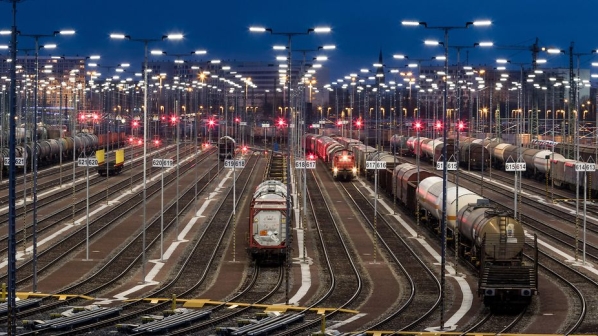The consortium includes DB, DB Cargo, SBB Cargo, Rail Cargo Austria and freight wagon leasers Ermewa, GATX Rail Europe and VTG. The pilot project, awarded by the German Federal Ministry of Transport and Digital Infrastructure (BMVI), will run from July until December 2022. BMVI will provide €13m for the project over the next two-and-a-half years.
With the DAC, the freight wagons and their power, data and compressed air lines are coupled together automatically, removing the need for heavy physical work.
During the first stage of the project, 12 freight and tank wagons from DB Cargo and GATX will be equipped with coupling prototypes from four different manufacturers. Technical tests will then be undertaken to select the preferred coupling type.
In the second stage, a demonstrator train consisting of 24 freight wagons will be equipped with the selected coupling, before operating in Germany, Switzerland, Austria and other European countries, which will include daily use in marshalling yards.
The results from the project will then be integrated into the European DAC Programme, which was approved by S2R’s governing board on July 23.
S2R says the programme will build on the freight-related research and innovation it has already undertaken as part of Innovation Programme 5 (IP 5), allowing the sector to collectively drive the deployment of technological and operational solutions related to the DAC through a focused and inclusive system approach.
The programme will be undertaken together with the European Union Agency for Railways (ERA), relevant railway associations and technical bodies, under the overall steering of the European Commission (EC).
The programme’s objectives will include assessing the available solutions, testing and demonstration, defining migration plans, assessing the interfaces with other programmes, developing business cases, and communication and dissemination.
The expected outcomes include:
- the selection of an open, functional, operationally tested, safe and sustainable European DAC model, which is ready for industrialisation and deployment
- the delivery of a final open design of the selected model, based on use-case considerations, by the end of 2021, along with the interoperability and safety requirements which could be incorporated into the TSI, Green Deal & Digitalisation Package in 2022, and
- subject to the results of the ongoing business case analysis, the identification of migration and business plans compatible across Europe as well as the necessary resources.
An interim working group will be set up under the responsibility of S2R’s head of research and innovation together with the future DAC programme manager.
The activities will begin under the S2R project, which will provide some programme support within existing contracts and involve the key role of IP 5. S2R 2, if approved, will expand its involvement in the programme, as it is expected to include a large ‘transforming project’ dedicated to freight.
“The EU-wide introduction of a DAC is not a task that can only be tackled at the level of the member states - European solutions are required here,” says Mr Enak Ferlemann, parliamentary state secretary to the German federal minister of transport and digital infrastructure. “The big financial challenges in particular will not be solved by the companies alone. This will require a comprehensive and adequately equipped European funding programme.”
“If the digital automatic clutch is introduced across Europe, it will be a revolution for rail freight transport - and a huge relief for employees,” says Ms Sabina Jeschke, DB board member for digitalisation and technology.

